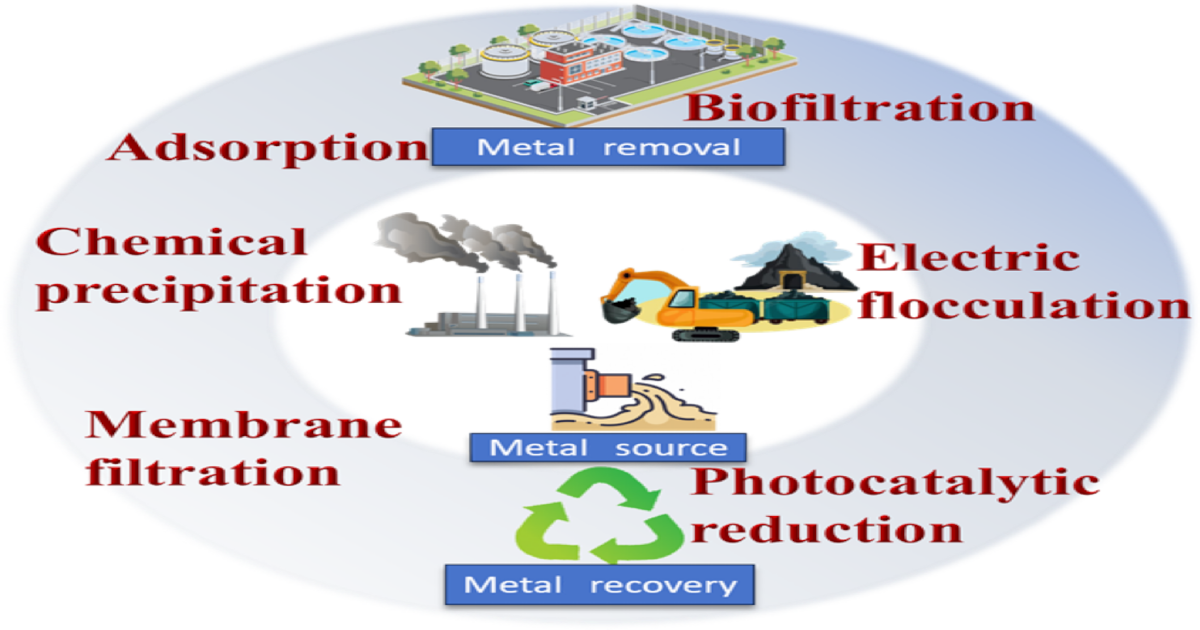- 3.0Impact Factor
- 6.0CiteScore
- 20 daysTime to First Decision
Advances in Metal Removal and Recovery from Water
This special issue belongs to the section “Wastewater Treatment and Reuse“.
Special Issue Information
Dear Colleagues,
The metal pollution caused by natural resources and intensified human activities has led to severe problems for human and environmental health. In addition to the removal of easily mobile and toxic metal cations, the reuse of metal resources from water/wastewater has become increasingly important, particularly in the attempt to achieve economic and environmental sustainability. Therefore, it is imperative to perform scientific research to identify appropriate solutions to resolve the problem of finding methods that provide the efficient removal and recovery of metals from water/wastewater.
This Special Issue focuses on the use of wastewater treatment methods that effectively remove metal pollutants from wastewater as well as resource recovery. Original research papers of high scientific quality as well as review articles are welcome. Manuscripts can cover, but are not limited to, the following topics:
- Efficient treatment of toxic metals from water.
- The developments of economic and environmental separation technologies for the recovery of metal resources in water.
- New methods for the removal and recovery of metals from water/wastewater.
- Potential trends and challenges in the mechanism of metal removal and in recovery strategies.
Dr. Xiande Xie
Guest Editor
Manuscript Submission Information
Manuscripts should be submitted online at www.mdpi.com by registering and logging in to this website. Once you are registered, click here to go to the submission form. Manuscripts can be submitted until the deadline. All submissions that pass pre-check are peer-reviewed. Accepted papers will be published continuously in the journal (as soon as accepted) and will be listed together on the special issue website. Research articles, review articles as well as short communications are invited. For planned papers, a title and short abstract (about 250 words) can be sent to the Editorial Office for assessment.
Submitted manuscripts should not have been published previously, nor be under consideration for publication elsewhere (except conference proceedings papers). All manuscripts are thoroughly refereed through a single-blind peer-review process. A guide for authors and other relevant information for submission of manuscripts is available on the Instructions for Authors page. Water is an international peer-reviewed open access semimonthly journal published by MDPI.
Please visit the Instructions for Authors page before submitting a manuscript. The Article Processing Charge (APC) for publication in this open access journal is 2600 CHF (Swiss Francs). Submitted papers should be well formatted and use good English. Authors may use MDPI's English editing service prior to publication or during author revisions.
Keywords
- wastewater treatment
- water treatment
- metal pollution removal
- metal recovery
- absorption
- heavy metal

Benefits of Publishing in a Special Issue
- Ease of navigation: Grouping papers by topic helps scholars navigate broad scope journals more efficiently.
- Greater discoverability: Special Issues support the reach and impact of scientific research. Articles in Special Issues are more discoverable and cited more frequently.
- Expansion of research network: Special Issues facilitate connections among authors, fostering scientific collaborations.
- External promotion: Articles in Special Issues are often promoted through the journal's social media, increasing their visibility.
- e-Book format: Special Issues with more than 10 articles can be published as dedicated e-books, ensuring wide and rapid dissemination.

